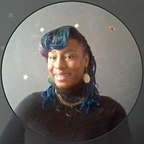A Neurodiverse Person Walks Into a Museum
Artefact Accessibility and the ambivalent nature of museums
A neurodiverse person walks into a museum.
It is beautiful, inspiring, fun, dynamic, full of information,
large, expansive,
the signage is confusing, wayfinding challenging, it is confusing,
tiring, it all becomes a little overwhelming, but remains beautiful.
A now mentally fatigued neurodiverse person walks out of a museum.
(Thompson 2021)
Now this quote, by me, obviously does not describe every experience for everyone, neurodiversities by their very nature are diverse, but this was how I use to feel when I was younger, and sometime still do, when I visit an exhibition. It is enjoyable and fascinating at the same time as leaving me feeling overwealmed tired and socio-emotionally fatigued but always happy I attended, though sometimes the lack of decolonisation within these spaces weighs heavily on the experience.
As someone with a neurodiversity and an enthralment with education and learning museums, special collection, cabinets of curiosity, archives, libraries and similar establishment have always seemed quite magical to me. They represent vast stores of knowledge and inspiration at the same time as having aspects surrounding their contents that I jut outside of my reach, the magic of the unattainable. Even more so than before with the decolonising work going on it has become an even more inspirational space, though there is still worrk to be done in this area. As a child, who was unaware of my type of neurodiversity but fully aware that my brain worked differently, that I was different, I was often left feeling extremely ambivalent at the end of a visit; in complete awe full of and inspired by the ideas but also slightly confused and frustrated, sure I had missed elements of information and certain I had forgot anything I wasn’t able to write down quickly enough before it was lost to me.
There are however wonderful advances in these areas, some do not alter the way in which places function but utalise spaces in a different way, having the quiet spaces more prominantly advertised and easy to get to for those experiencing a censory overload is alway a great and appreaciated feature, having set days for differnet planned activities is useful to avoid busyer days that may be overwhelming. And there are many things I put in place for myself like making sure I have mindfulnes activities I can do for myself to help destimulate at least a little before traveling home.
In my own work in archives and special cllection I try to be conscious of the user experience in how I respond to queries, write catalogue descriptions and utilise social media. It is an ongoing process and I am improving and learning new skills from a variety of places and people.
